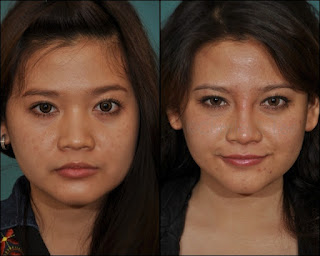The manicure is being updated with longer-lasting polishes, strengthening treatments and lots of glitz and glamour. Big question is are these new developments safe?
Here is a short dermatological review of what to expect and what to look for during a safe mani or pedi to ensure, you are doing it safely.
Is There Any Danger Of Harmful
Chemical Exposure?
With new trends in nail aestherics, consumers are revisiting
concerns about safety. Some polish manufacturers make a point of stating that
their formulations do not contain certain ingredients—for example:
Toluene: a liquid
solvent. It helps nail polish go on smoothly and adhere evenly to the nail. Toluene has been linked to air
pollution hence, its not that readily present in product available in the first world markets.
DBP: a
plasticizer, that was phased out years ago. It acts as a binder to improve
the lasting power of nail lacquer and prevent chips and
cracks. It is toxic and known to cause cancer, developmental and
reproductive toxicity, allergies and immunotoxicity, organ toxicity,
skin/eye/lung irritation, neurotoxicity, endocrine disruption and persistence
and bioaccumulation in wildlife.
Formaldehyde: it is
used in some nail hardeners to make the polish tough and
resilient It is toxic and is known to cause cancer, developmental
and reproductive toxicity, allergies and immunotoxicity, occupational hazards,
organ system toxicity, skin/eye/lung irritation and biochemical or cellular
level changes.
Methyl Methacrylate: is used
in gel manicures. Over the last couple of years, the gel manicure has grown in
popularity: Two-thirds of salons now offer the service, which is supposed to
provide the long wear of an acrylic without the accompanying nail damage. Be
wary of too-good-to-be-true prices. It might indicate use of the bonding liquid
methyl methacrylate (MMA), which is much cheaper than the alternative ethyl
methacrylate (EMA). Industry observers say MMA is still being widely used for
traditional acrylic nails. It’s a powerful adhesive, a technician
must aggressively file your nail to get it off. That’s a threat to
consumers. On a weekly basis, women are getting damaged nails and infections.
What about the
dangers of UV exposure during drying?
A case
study by Austin-based University of Texas researchers in the "Archives of
Dermatology" in April 2009 reported that two women developed non-melanoma
skin cancer on the tops of their hands from exposure to nail lamps. Both women
were middle-aged, otherwise healthy, and had no cancer history. This does not
prove that UV nail lamps definitely cause skin cancer; larger clinical studies
will be necessary to determine a link. Word of advice use UV nail lamps in as
limited a fashion as possible. Another option may be to look for a salon that
uses LED (light emitting diode) instead of UV dryers.
How About Risk Of Developing
Allergies?
Manicures have been linked to allergic reactions in people. An
allergy may be aggravated, because of chemicals normally present in most nail
products. Products that can trigger off allergies are – nail polish, nail
hardeners, base coats, top coats and artificial nails. Common allergic reactions that are
usually observed with mani pedi's include – inflammation, itchiness, redness of the skin and a
burning sensation. These allergic reactions normally take place in the area
below the nail. In some cases, they could also affect a person’s face and neck.
Other problems associated with manicures are – brittle nails, stains and
discolored nails.
How About Risk Of
Fungal And Bacterial Infections?
Use of EMA and aggressive filing increases the risk of developing nail infections
during a manicure.
Since manicure and pedicure tools can become contaminated
with bacteria, fungi and blood-borne viruses such as HIV, hepatitis B or
hepatitis C, it is important that these tools are cleaned and disinfected using proper sterilization procedures prior to reuse. Or depending on the tool; some tools should be disposable and should not be
reused.
You should always ask at your salon if they disinfect their
tools sufficiently, so you are not at risk for bacterial and fungal infections.
If you’re unsure, ask about sterilization methods (an establishment that takes
infection control seriously should be eager to tell you about it).
If you’re still skeptical, bring your own tools or find a
salon that offers each client a separate set.
Regardless of the tools used, avoid having your cuticles
trimmed since that can promote infection. And contact your physician if your
fingers burn, itch, sting, or turn red after a manicure.
Signs of Fungal
Infection:
Nail fungal infections usually start off as a white or
yellow spot at the tip of the nail. Later, as the fungus spreads, the nail may
become discolored, thicken, lose luster and shine, change in shape and develop
crumbling edges. For some people, it may also cause pain, odor or separation of
the nail from the nail bed.
What should I expect from my nail
technician?
- If an infection is suspected on your skin or nails, you should be denied service and be advised to see a doctor.
- A nail technician should never provide you with treatment for nail mould or fungus.
- The nail technician should be willing to answer all your questions about the procedure and any infection prevention steps taken.
- The salon should be well-lit, clean and tidy.


















